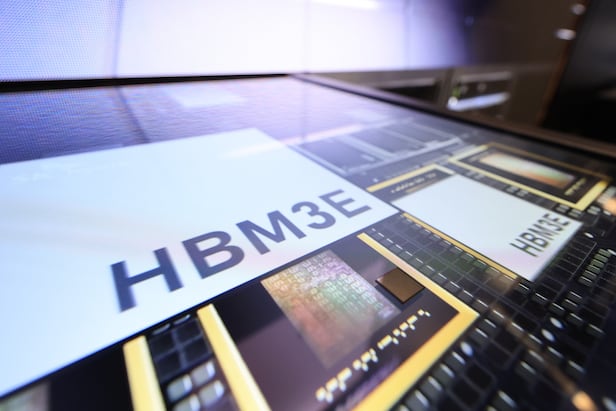
Surging DRAM prices and booming HBM demand, fueled by Middle East AI investments and global tariff fears, are expected to boost earnings for Samsung Electronics and SK Hynix. Major clients are rushing to stockpile DRAM ahead of potential U.S. tariffs, while U.S. chipmaker Nvidia’s large-scale AI chip deal with Saudi Arabia is driving fresh momentum for South Korea’s leading memory chipmakers.
According to industry sources on May 19, Samsung Electronics raised prices for both legacy DDR4 and newer DDR5 DRAM by double-digit percentages earlier this month. SK Hynix also lifted consumer DRAM prices by about 12%. The broader uptrend gained momentum after U.S. chipmaker Micron notified clients last month of planned price hikes.
Average selling prices (ASPs) for DRAM began climbing in April after a five-month lull. According to market research firm DRAMeXchange, the fixed contract price for standard PC DRAM (DDR4 8Gb 1Gx8) surged 22.2% from the previous month to $1.65.
Analysts attribute the recent price surge to stockpiling by major clients ahead of looming U.S. tariffs. American firms are buying cautiously to avoid tariff impacts, while China’s replacement and renewal subsidy program is boosting demand from domestic PC and smartphone makers. Older DRAM chips, long stuck in oversupply, are now seeing steeper price hikes than newer DDR5 products.
“Due to growing global tariff concerns, customers accelerated prebuilds of finished products, which led to faster-than-expected depletion of component inventories,” said Kim Jae-june, executive vice president of Samsung’s memory division, during the company’s first quarter earnings call on April 30. For Samsung, whose performance is closely linked to DRAM pricing, the trend offers a potential springboard for a second-quarter rebound.
Despite uncertainty in the semiconductor market, high-value memory products are expected to rise. Along with general DRAM price increases, high-bandwidth memory (HBM) prices are also surging. Nvidia’s recent deal with Saudi Arabia has fueled expectations of a second AI memory boom.
Nvidia on May 13 said it signed a deal with Humain, an AI startup backed by Saudi Arabia’s Public Investment Fund (PIF), to build a 500-megawatt AI data center. Over five years, Nvidia will supply about 18,000 GB300 GPUs equipped with its latest Blackwell Ultra chips.
Industry sources say Nvidia is paying over 60% more for SK Hynix’s 12-layer HBM3E chips than for the eight-layer version, reflecting its urgency to secure supply ahead of Blackwell Ultra’s accelerated launch in the first half of this year.
SK Hynix, which supplies Nvidia with both eight-layer and 12-layer HBM3E, is forecast to post record earnings in the second quarter. “SK Hynix’s total HBM shipments this year are expected to reach 13.7 billion gigabits, with Nvidia accounting for over 70%,” said Kim Kwang-jin, analyst at Hanwha Investment & Securities. “The company’s dominance in the HBM market is likely to continue through next year.”


